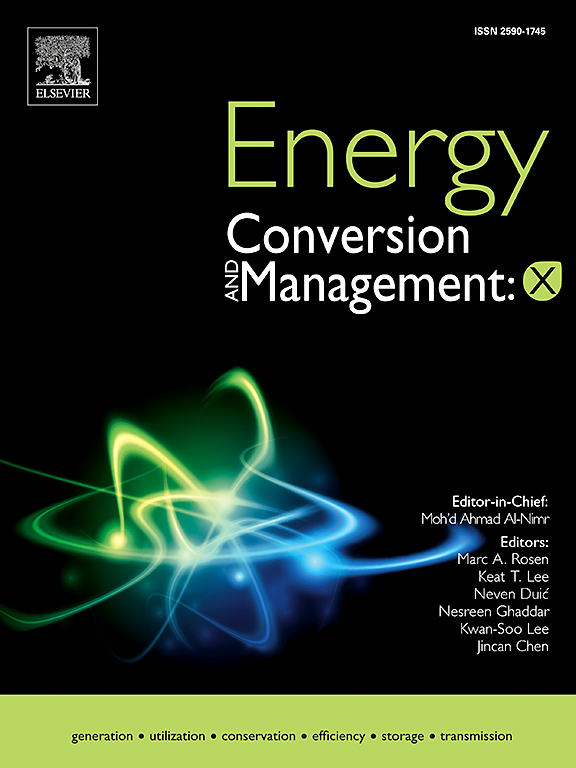Life cycle greenhouse gas emissions and cost of energy transport from Saudi Arabia with conventional fuels and liquefied natural gas
IF 7.1
Q1 ENERGY & FUELS
引用次数: 0
Abstract
The International Maritime Organization has recently developed several regulations to reduce greenhouse gas (GHG) emissions. To meet these targets, ship builders and operators must either replace or upgrade the existing fleet with new decarbonized vessel technologies and/or switch to alternative fuels. The latter has been of interest, especially using liquefied natural gas (LNG), among other alternative fuels, which can have lower emissions than conventional fuels. In Saudi Arabia in 2023, LNG was priced about 10 times lower than in Europe. In this study, Well-to-Wake life cycle GHG emissions and cost are calculated for a SUEZMAX tanker operating with three fuel options: high sulfur fuel oil, very low sulfur fuel oil and LNG. This is done for two different trips, for Saudi Arabia to Japan and Saudi Arabia to the Netherlands. Results show 11% and 12% life cycle GHG emissions reduction with LNG for trips to the Netherlands and Japan, respectively. From a sensitivity analysis of methane slip, LNG cost and anchoring time, the cost of GHG abatement for the LNG vessel varied from 171 United States dollars (USD) to –255 USD, and from 206 USD to –191 USD per ton of GHG, for the trip to the Netherlands and Japan, respectively.
使用传统燃料和液化天然气从沙特阿拉伯运输能源的生命周期温室气体排放量和成本
国际海事组织最近制定了多项减少温室气体排放的法规。为了达到这些目标,船舶建造商和运营商必须采用新的脱碳船舶技术和/或改用替代燃料来替换或升级现有船队。后者一直备受关注,尤其是使用液化天然气(LNG)和其他替代燃料,因为后者的排放量低于传统燃料。2023 年,沙特阿拉伯的液化天然气价格比欧洲低约 10 倍。在本研究中,计算了一艘使用三种燃料的 SUEZMAX 油轮的 Well-to-Wake 生命周期温室气体排放量和成本:高硫燃油、极低硫燃油和液化天然气。计算分别针对沙特阿拉伯至日本和沙特阿拉伯至荷兰的两个不同航程。结果显示,在前往荷兰和日本的行程中,液化天然气的生命周期温室气体排放量分别减少了 11% 和 12%。通过对甲烷滑移、液化天然气成本和锚泊时间的敏感性分析,在前往荷兰和日本的航程中,液化天然气船每吨温室气体的减排成本分别从 171 美元到-255 美元不等,以及从 206 美元到-191 美元不等。
本文章由计算机程序翻译,如有差异,请以英文原文为准。
求助全文
约1分钟内获得全文
求助全文
来源期刊

Energy Conversion and Management-X
Multiple-
CiteScore
8.80
自引率
3.20%
发文量
180
审稿时长
58 days
期刊介绍:
Energy Conversion and Management: X is the open access extension of the reputable journal Energy Conversion and Management, serving as a platform for interdisciplinary research on a wide array of critical energy subjects. The journal is dedicated to publishing original contributions and in-depth technical review articles that present groundbreaking research on topics spanning energy generation, utilization, conversion, storage, transmission, conservation, management, and sustainability.
The scope of Energy Conversion and Management: X encompasses various forms of energy, including mechanical, thermal, nuclear, chemical, electromagnetic, magnetic, and electric energy. It addresses all known energy resources, highlighting both conventional sources like fossil fuels and nuclear power, as well as renewable resources such as solar, biomass, hydro, wind, geothermal, and ocean energy.
 求助内容:
求助内容: 应助结果提醒方式:
应助结果提醒方式:


